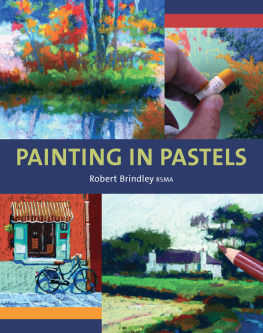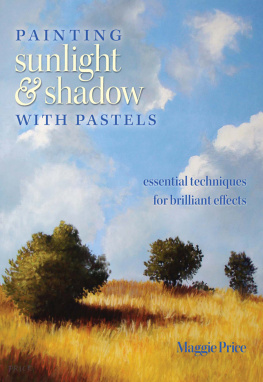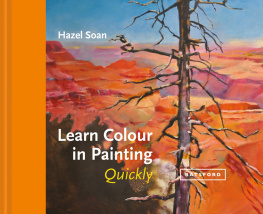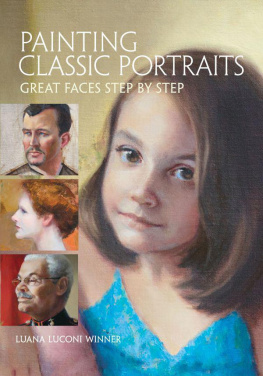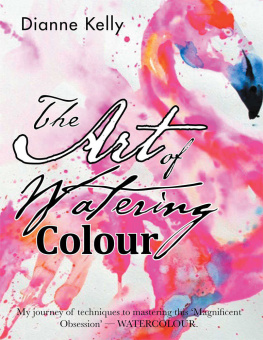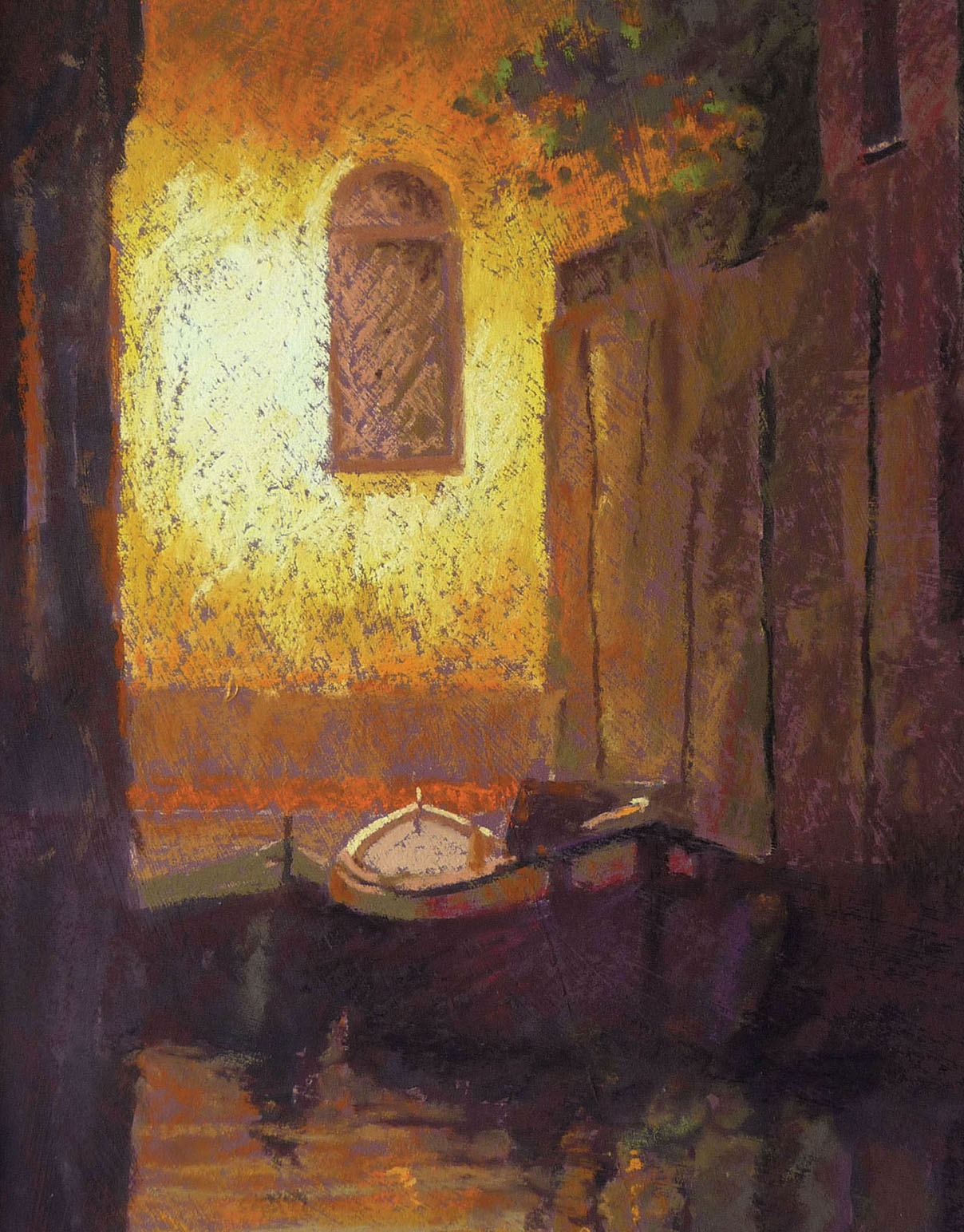
PAINTING IN PASTELS
Robert Brindley RSMA

THE CROWOOD PRESS
First published in 2010 by
The Crowood Press Ltd
Ramsbury, Marlborough
Wiltshire SN8 2HR
www.crowood.com
This e-book first published in 2015
Robert Brindley 2010
All rights reserved. No part of this publication may be reproduced or transmitted in any form or by any means, electronic or mechanical, including photocopy, recording, or any information storage and retrieval system, without permission in writing from the publishers.
British Library Cataloguing-in-Publication Data
A catalogue record for this book is available from the British Library.
ISBN 978 1 78500 058 4
Front cover: Autumn/The Hermitage Near Whitby 28 33cm (11in 13in)
Frontispiece: Golden Light/Venetian Nocturne 23 28 cm (9in 11in)
CONTENTS
FOREWORD
Coloured powder, bound to form a stick? What possibilities for aspiring or established artists to engage in creative image making!
Robert Brindley opens up an intriguing and masterful range of opportunities in painting with pastels, the most instant of colour applications. His creative ability, developed through experienced observation and channelled through a highly perceptive analysis of his chosen subject, displays a remarkable authority across the full compass of pastel technique.
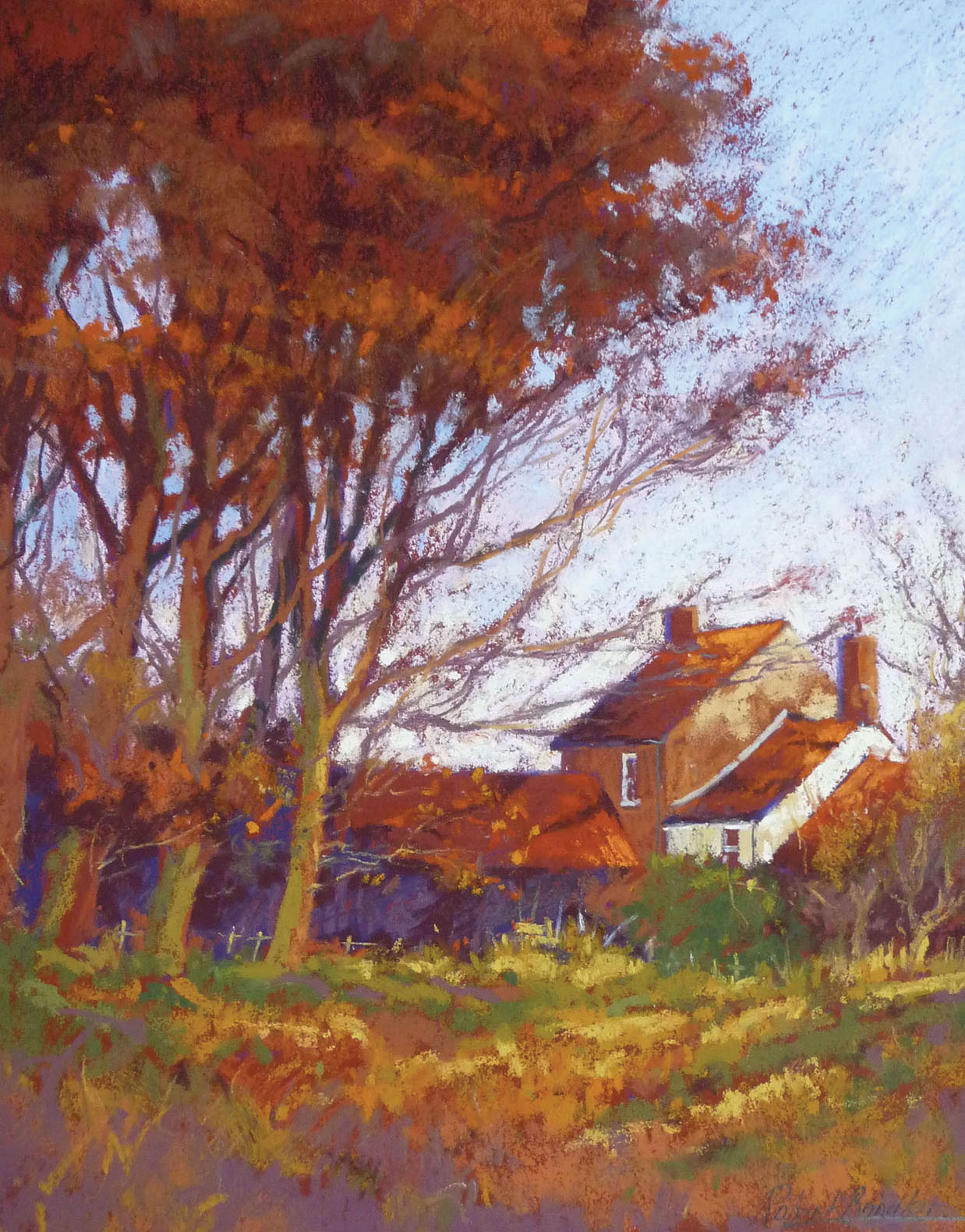
Autumn/The Hermitage Near Whitby, 28 33cm (11in 13in).
He presents for us, the viewer, an astonishing orchestration of pastel painting and mark making, creating a wonderment of light, shade and depth. His captivating passages of smoothed pastel glow in the warmth of soft focused sunlight, alternating with serene, cool atmospheric distances, evoking space and a sense of mystery.
The visual tension he creates across the picture plane is often a foreground overlaying of intense electric brilliance, dextrous dashes, telling darks expressive exuberance with the courage of the moment, held together with draughtsmanship and understanding.
He offers us a colour symphony of moods, magic and mastery of the medium, the creative manipulation of coloured dust.
Byron Howard, Master Sculptor, Travis Studio
INTRODUCTION
The novice paints the leaves; the master suggests the tree.
Anonymous
Pastels are an exciting, versatile medium, ideal for painting, sketching and drawing. They provide the artist with a larger range of instant, vibrant colour than the other painting mediums. Their immediacy when drawing, combined with their richness of colour, make pastels perfect for experimentation and personal expression, either for rapid studies or finished pieces of work. In addition to all these factors, the amount of materials required is less than for oils or watercolours.

Holly, 30 25cm (12 10in).
Soft pastels are made of pure, powdered pigment, bound together with a carefully measured amount of resin or gum (just sufficient to hold the pigment together), then moulded into stick form. Oil pastels are similar but bound together with an oil medium. Because pastel sticks are made in this way, they are the purest form of applying pigment to a surface. This purity of pigment produces paintings of distinctive strength of colour and luminosity.
In recent years the popularity of pastel painting has grown significantly. There are many reasons for this resurgence; however, I feel that the irresistible range of mouth-watering, pure colours available, coupled with the flexibility of the medium are the primary reasons. Pastels can be worked in a variety of ways, producing paintings depicting soft atmospheric conditions through to bold statements of full colour and imaginative design, where the characteristics of the medium can be fully exploited.
The selection, motivation and interpretation of any subject are of paramount importance to the success of any piece of work, and the use of pastel as your selected medium will allow you unlimited freedom when considering these factors.

Hay Bales, 38 30cm (15 12in).
Versatility
Being such a versatile medium they are an ideal choice for painting a wide variety of subject matter, such as landscape, still life and portrait painting, to name a few.
Landscape
Artists have always drawn and painted the landscape; perhaps its natural to want to capture the beautiful scenery that surrounds us. Landscapes are nearly always at their most appealing during the hour after sunrise and the hour before sunset, but these are also the times when the light is changing the fastest. With their wide range of ready made, vibrant colours, to represent brilliant skies, glowing suns and vegetation bathed in early morning or late afternoon light, pastels offer the artist the ability to capture a scene before the light completely changes.
Bright colours or dark ones, sparkling clarity or misty atmosphere, landscape, still life, portrait I havent met a subject, style or mood yet that cant be portrayed beautifully in pastel.
Dave Beckett
Still Life
Typically, a still life painting will feature objects such as flowers, fruit, china or other items, arranged to form an interesting group. Successful paintings in this genre are achieved by careful consideration of the way the light falls and illuminates each object within the group. Your ability to observe and reproduce light convincingly is paramount when painting any subject matter; however, this is especially important for reproducing the subtlety of reflected light found in many still life subjects.
Portrait
Before the invention of photography, the only way to get a permanent representation of yourself was to commission an artist. Since the advent of the camera things have changed dramatically and most people have dozens of photographs of themselves. Despite this, portraits remain a firm favourite among sitters and artists alike. As in landscape painting, the immediacy of pastel is also beneficial for portraits. They allow you to capture a likeness quickly, before the sitter gets bored. Layering and blending techniques are perfect for representing soft, translucent skin tones. Having all your colour and tonal options at hand, rather than having to mix them, makes selecting the right ones far easier.
A Brief History of Pastel Painting
Dry pigments made from natural materials were used by early cave-dwellers well before records were kept. Chalk had long been used as a drawing medium. However pastels or chalk, compressed into stick form in many colours, only became available to artists in the late fifteenth century.
Pastels gradually became an established painting medium in the sixteenth to eighteenth centuries as more artists used this form of pastel crayon to produce colour sketches or studies for larger oil paintings. During this time, some artists began to experiment with pastels as a new standalone medium; their subtlety and speed of application developed virtuosity previously unseen.

